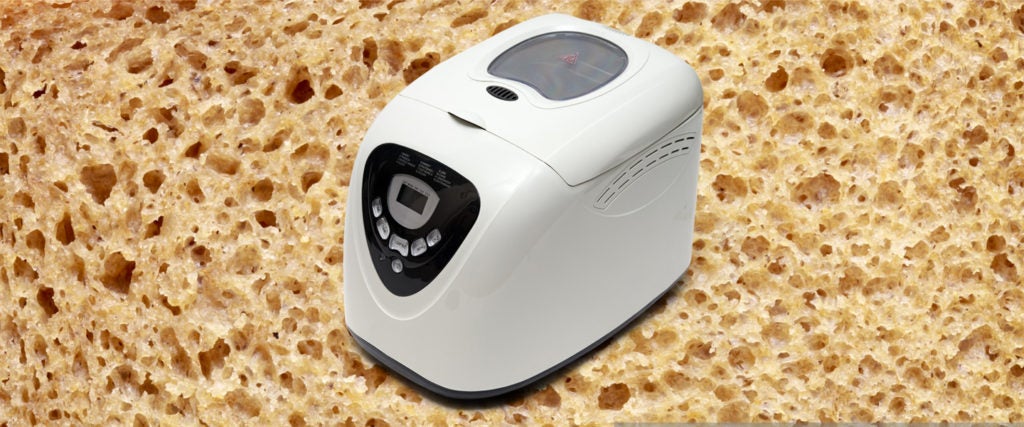Back in April, when everyone suddenly decided to start making bread to pass the time in quarantine, Carrie, a 35-year-old in Chicago, had a better idea. Her mom had recently dropped off the family’s old bread machine. You know the one — the inconspicuous white box with a window and rounded corners that every millennial brain thinks of upon hearing the words “making bread.” Could there have been a better time to fire it back up?
By the late 1990s, such bread machines were everywhere, but the doughy journey actually began in 1986. After a year of researching how to cram all the time-consuming, laborious steps of making bread into a simple kitchen appliance, the Matsushita Electric Industrial Company (now Panasonic) released its first bread machines to market (first in Japan and then in the U.S. two years later).
Initially, the bread machines saw middling success. As slick as having the ability to pour a few ingredients into a bucket and press a button to get homemade bread was, only 15,000 Americans were willing to brave the $400 price tag to try it out. After all, why buy a $400 machine when a loaf of bread from the store was a fraction of the cost?
Just got my moms old bread machine super excited to try it out. from BreadMachines
But within a couple of years, the price dropped to $200, and the bread machine exploded in popularity. By 1993, an estimated four million bread machines found their way into American homes. In an interview with The Morning Call, a representative for Hitachi Home Electronics (a Panasonic competitor) said they were selling “60,000 to 70,000 bread machines a month,” eight times what their sales were in 1988. And at the turn of the century, the L.A. Times reported that one in five American households owned a bread machine. (In fact, at some point along the way, January was officially named National Bread Machine Baking Month.)
Unfortunately, though, all trends come to an end, and the bread machine fell out of fashion in the early aughts. Whether it was the saturated market, the rise of carb-avoidant and gluten-free diets or people losing interest in making the same few types of bread, eventually the sentiment around making bread in a bread machine turned to, True bakers make bread the old-fashioned way — you wouldn’t call yourself a chef after microwaving a Hungry-Man.
It’s a tale that’s more or less perfectly encapsulated in Carrie’s dalliance with her mom’s old bread machine — she briefly toyed with the idea of ordering ingredients, but ultimately lost interest. That said, she tells me, “The trip down memory lane when I called my mom about using it was still nice, especially after she reminded me that we all grew pretty tired of eating the bread-maker bread after about six months.”

